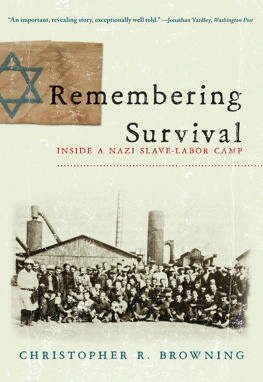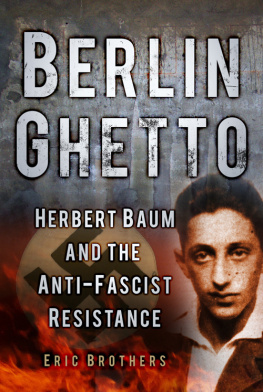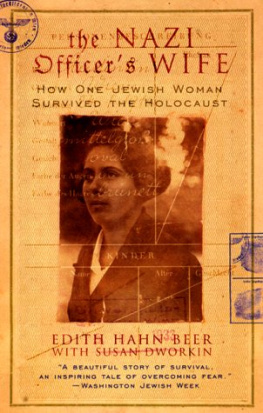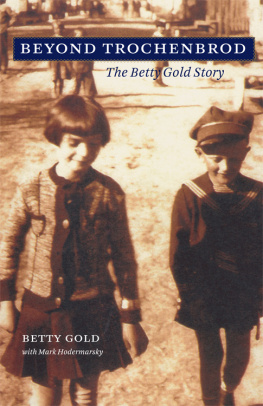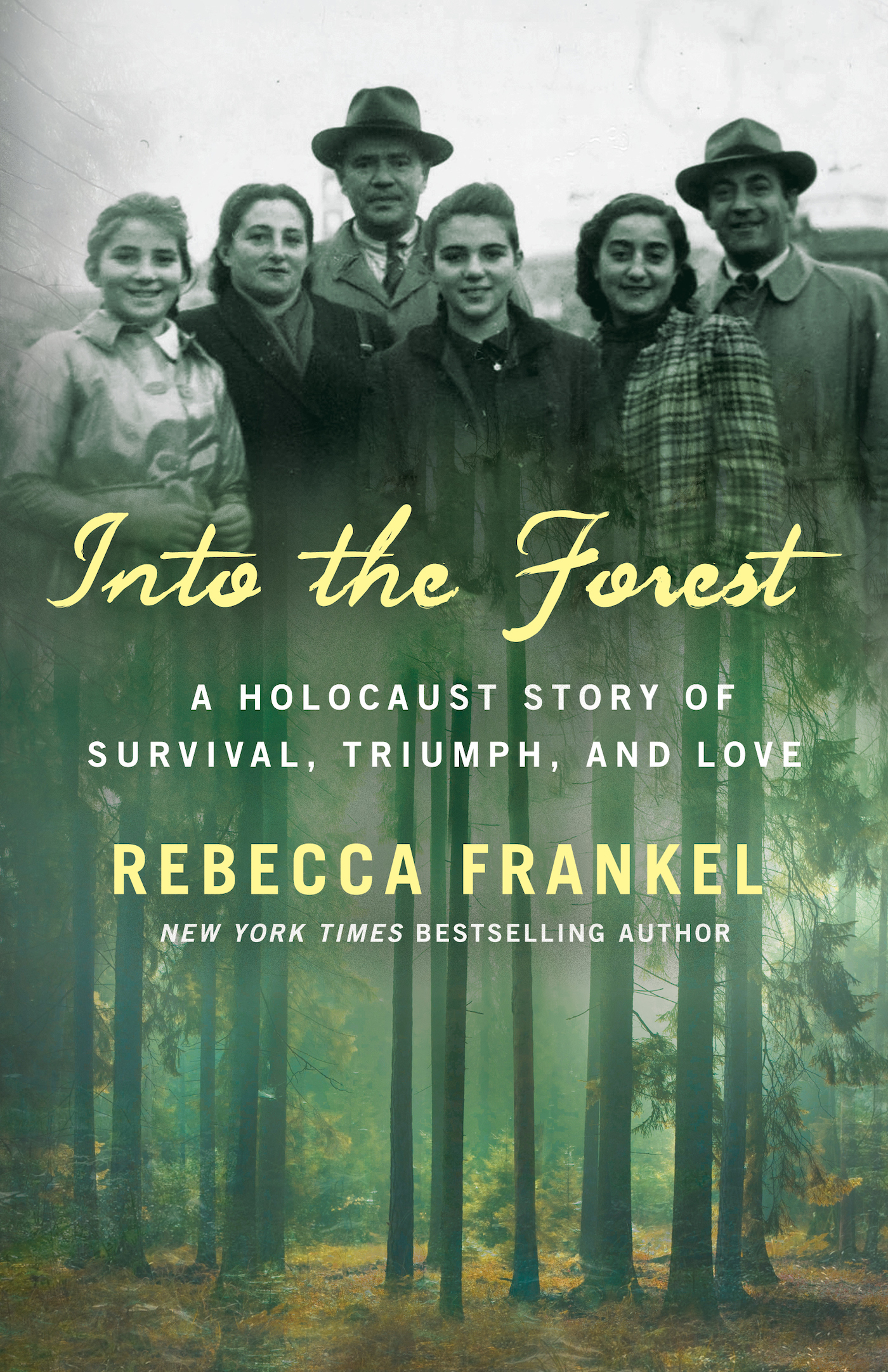Contents
Guide
Pagebreaks of the print version

The author and publisher have provided this e-book to you for your personal use only. You may not make this e-book publicly available in any way. Copyright infringement is against the law. If you believe the copy of this e-book you are reading infringes on the authors copyright, please notify the publisher at: us.macmillanusa.com/piracy.
For Gail
For Miriam and Luba
For Ruth and Toby
For sisters

A Wedding in Brooklyn
In the New York City Clerks archive there are 1,049 lined ledger pages dutifully cataloging Brooklyns newlyweds in 1953. Somewhere among the marriage certificate numbers and the columns of dates recorded in looping black scrawl are the names of a couple who said I do on a May afternoon in a small catering hall in one of the boroughs Jewish enclaves.
Their wedding was the flashpoint of multiple time linesan event that determined the course of more than a dozen lives and upon which at least one fated love story hangs. Which is why its all the more curious that, at least in this specific sense, the bride and groom are inconsequential. Their role in this story is merely a footnote; even their names have long been forgotten. Far more remarkable is who attended their wedding and the extraordinary thing that occurred between them.
Among the newlyweds reception guests that day was a young Yeshiva University student named Philip Lazowski. Morning after morning, this dark-haired young man with his compact build and bookish intensity hopped on the subway from Brooklyn and rode it all the way up to Manhattans West 185th Street to attend classes, only to make the return trip back to the Flatbush Avenue station so he could take night courses at Brooklyn College. Though he had been in New York for nearly five years, the twenty-three-year-old immigrant with a halting accent hadnt adjusted to his new life in the United States.
Reluctant to attend this spring wedding of his fellow Yeshiva student, Philip drifted uncomfortably through the crowd of American twentysomethings sashaying around him in their sports jackets and crinoline skirts. When music filled the hall and partygoers rose to join the newlyweds on the dance floor, Philip, ill at ease in his borrowed suit, stayed seated at his table. So did a young woman with raven-swept hair and bright brown eyes occupying the chair next to his. They started talking and discovered they had much in common. Her name was Gloria and she was also taking night courses at Brooklyn College. She was from a small town in Poland, as was Philip. And like him, Gloria had escaped Nazi slaughter by fleeing to the Biaowiea Forest to live alongside the partisan fighters in the woods.
When Gloria heard that Philip was from a village called Bilitza, her lovely face lit up. I know a woman who once saved a boy from Bilitza, she told him. The woman was the mother of her friend, a girl shed met in a refugee camp in Italy, who was now living in Connecticut. In fact, she had just been to see them. Only the woman doesnt know if the boy survived, Gloria said.
How did she save him? Philip wanted to know.
Gloria told him the story of how her friends mother had risked her own life and the safety of her two young daughters to keep the boy from death during the first ghetto massacre in Zhetel.
As he listened, Philips heart began to poundhe already knew this story. That was me, he told her. I am that boy.
A few minutes later, Philip was racing down a flight of stairs to the pay phone in the catering hall basement. Excitement buzzed through him as he dialed the operator while the wedding party whirled on above.
The operators voice sounded in his ear. After he deposited the correct change for the long-distance call, she asked who he was trying to reach. Rabinowitz, he replied. But there were six Rabinowitz residences listed in Hartford. What, she asked, did he want her to do?
Philip felt around inside his pocketthere werent enough coins to pay for a second call. He took a deep breath. Try the first one, he told her.
The line rang.
A woman answered.
It was herMiriam Rabinowitz, the woman who had saved him. Hed found her at last.
Weddings are life-affirming rituals with a hopeful view of the future implicit in their ceremonies. But they are also bridges between individuals, families, and formative years. So it is fitting that this serendipitous encounter should have transpired at a wedding.
Even then, in 1953, nearly a decade after World War II officially came to a close, there were still some people for whom a Jewish union like this one would be viewed as something of a marvel. The world had just emerged from one of the darkest periods in modern history, collectively having to rebuild on the loss of some sixty million lives. Of the six million European Jews killed in the Holocaust, three million were from Poland. By 1950, only 45,000 of the more than three million Jews counted in Poland in 1933 remained. An even smaller percentage of those who fled to the Belorussian woods survived.
As if fortune needed to signal just how powerful its hand had been in reuniting Philip Lazowski with Miriam Rabinowitz, on May 23, 1953, just one week after that wedding, Gloria Koslowski, the captivating brunette from the Brooklyn reception, was killed by a drunk driver while crossing Pitkin Avenue. Her death in any shape would have been tragic: that an intelligent, vibrant young woman should be robbed of her hard-won existence on a rain-slick street in Brooklyn more than four thousand miles away from where she had outrun the Nazis was a senseless death, devoid of any natural symmetry or justice.
But Glorias life would still give way to new life. She would become both the connective thread between two families and the seed from which a third would growall because she reunited the boy from Bilitza with the woman who saved him.
There are many stories of love and survival from the Holocaust, stories of extraordinary perseverance and bravery that defy all fathomable depths of human endurance. Many of them have twists of fate, and there are even a few with miraculously happy endings.
They are the great love stories of a terrible timeand this is one of them.
In the end, it was a beautiful wedding.
Even if, according to the bride and grooms parents, the occasion was long overdue and perhaps, for their sophisticated hosts, the event was a touch slapdash. Fortunately, there was far more to celebrate than there were reasons to complain. Not the least of which was the venue, a grand apartment in a posh Vilna neighborhood, a city that was no doubt flush with cosmopolitan allure for a young provincial couple exploring its delights in 1933.
It was actually the young lovers second attempt at a marriage ceremony. The first try for a romantic but no-frills elopement came to a panicked halt when the bride abruptly changed her mind. Game as she had been to buck tradition, and with it a Jewish ceremonyprepared even to be married by Vilna goyimher whole being had rejected the scene around them at the Vilna courthouse. No, she thought,



